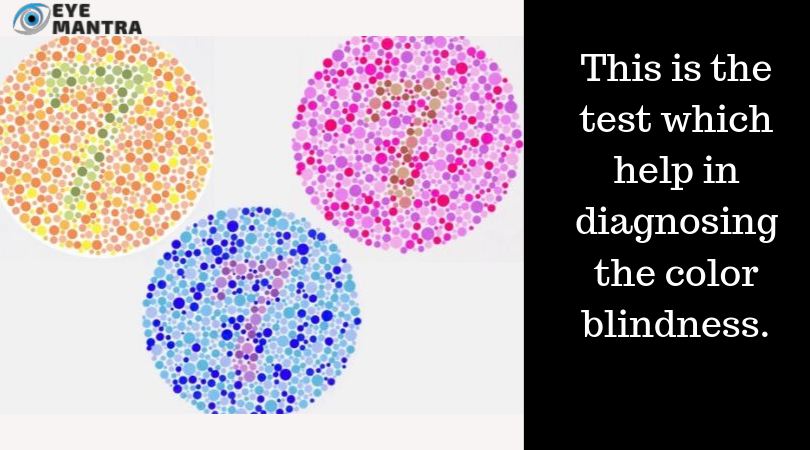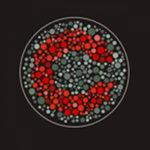Contents
Colour Vision Deficiency
As the name suggests the color blindness is a deficiency in seeing colours. A person with color blindness can not see certain colours such as blue, red, green, that is why called colour blindness. However, a person with color blindness sees as clear as a normal person. Color blindness makes it hard to do basic things like buying fruits, clothes, and reading, etc. Most people can adapt as it’s usually minor. It is an acquired condition that affects males more often than females. Red-green colour insufficiency is the most popular form of color blindness.
How do we see the colours?
The inner back layer of our eyes also known as the Retina consists of cone cells. These cones have light-sensitive pigment that is receptive to different colours. There are three types of cones that perceive colours i.e. blue, red, green. these cells detect colours and send the signals to the brain, forming an image. If any of these cones are absent or damaged, the person will suffer from color blindness.
Signs and Symptoms of Color Blindness
If you notice any difference in your vision from other people then you may have color blindness. Many people have such moderate symptoms that they are ignorant about the fact that they have a colour deficiency. Parents may only see a problem with a child when he is studying his colours.
The signs involve:
- Difficulty in distinguishing the difference among colours.
- change in vision like seeing colours less bright than they actually are.
- A person with color blindness will see colours like yellow grey, beige instead of red, blue, green.
Causes of colour blindness
Color blindness occurs when light-sensitive nerve cells in your eyes are damaged or absent. Three types of cones cells are receptive to different wavelengths of colours. When even one of these cones has an error, the person will face colour vision deficiency. There could be several reasons for color blindness-
- Genetics– This is the most common cause of colour blindness. Most people with colour vision deficiency are born with it. Men have higher chances of acquiring colour vision deficiency genes from their mother than a woman.
- Diseases– Cataract, Glaucoma, Parkinson’s disease, Macular degeneration, and Diabetic retinopathy are some diseases that can be the cause of colour blindness.
- Drugs– Colour blindness can also be caused by certain medicational drugs that are used in treating heart diseases, high blood pressure, or emotional disorders.
- Other factors– some other factors like trauma, age, the accident also plays a part in causing colour blindness.
Types of Colour-blindness
Color blindness could be of different types on the basis of which colour a person can’t see. Different types of color blindness cause different colours to disappear. There are mainly three types of color blindness –
Red-green color blindness
This is the most common type of colour blindness. In a red-green type of colour blindness, a person can’t differentiate between red and green colour. There are three types of red-green color blindness-
- Protanopia and Deuteranopia- in both of these cases, a person will be completely unable to differentiate between the colour red and green.
- Protanomaly- This type of red-green colour blindness makes red look greener. This is usually mild and does not affect any daily activities.
- Deuteranomaly- this is the common type of red-green colour blindness and is usually mild. In this case, sensitivity towards green colour is minimal and looks redder.

Blue-yellow colour blindness
In this type of color blindness, it’s hard to differentiate between blue-green, and yellow, and red. These two types are explained as-
- Tritanomaly- A person with tritanomaly has functionally short blue cone cells. In this condition blue resembles green and yellow resembles red.
- Tritanopia- It is a situation where a person cannot differentiate between blue and yellow colours. This is caused due to the deficiency of blue cone cells.
Complete colour blindness
Complete color blindness is quite rare. In this condition, you cannot see the colours at all. It is also known as monochromacy. This uncommon kind of colour blindness is caused by the dysfunction of two more cone cells.
Diagnosis of Colour blindness
People with color blindness most often don’t even know they have color blindness. As the sharpness of vision is not affected in any way, it’s hard to know if they see as perfect as other people. However, it’s easier to diagnose it in children as they study colours in their primary school. An optometrist can check color blindness through various tests like-
Ishihara Colour Test
This is the most common test for testing color blindness. In this test, you’ll be given templates that have dots embedded in two colours. You will have to read the numbers written on it. A person with colour blindness can’t see numbers.

Cambridge Colour Test
The only difference between this test and the Ishihara test is that the person has to recognize ‘C’ in dots displayed on a computer screen.

Farnsworth- Munsell 100 hue Test
This method of color blindness test is used by professional industries like graphic designers, food quality inspection, etc. it measures the ability to notice a subtle change in colours.

Treatments for colour blindness
There are no treatments available for hereditary colour blindness. But if color blindness is the side effect of other diseases or medications, then it can be cured by treating the disease. If you are on some medications that are causing color blindness then discontinuing the medicines may improve your colour vision deficiency.
Some other ways to see colours normally are wearing filtered eyeglasses or use gadgets that help in detecting colours. These ways are a temporary treatment for colour vision deficiency.
Conclusion
Colour blindness better referred to as colour vision deficiency is nothing to be afraid of; the symptoms are usually mild and adaptable. Although there are some professions that don’t allow colour blind people to work like railways, navy and graphic designing as they need to see colours brightly. But you can do everyday activity without any hurdles. Get your eyes tested if you experience any change in vision.
If you are suffering from colour blindness and need advice do visit or website and doctors. Book an appointment with Eyemantra as soon as possible. Let the ophthalmologist examine the level of colour vision problems.
For booking an appointment call now at +91-9711115191, even you can email at [email protected].
We have the exclusive equipment to treat the eyes. If you are going through other eye problems, we offer services such as Retina Surgery, Cataract Surgery, Specs Removal. Consult our experts NOW!



